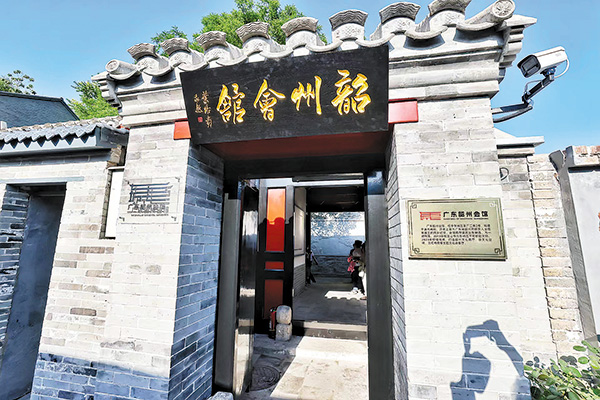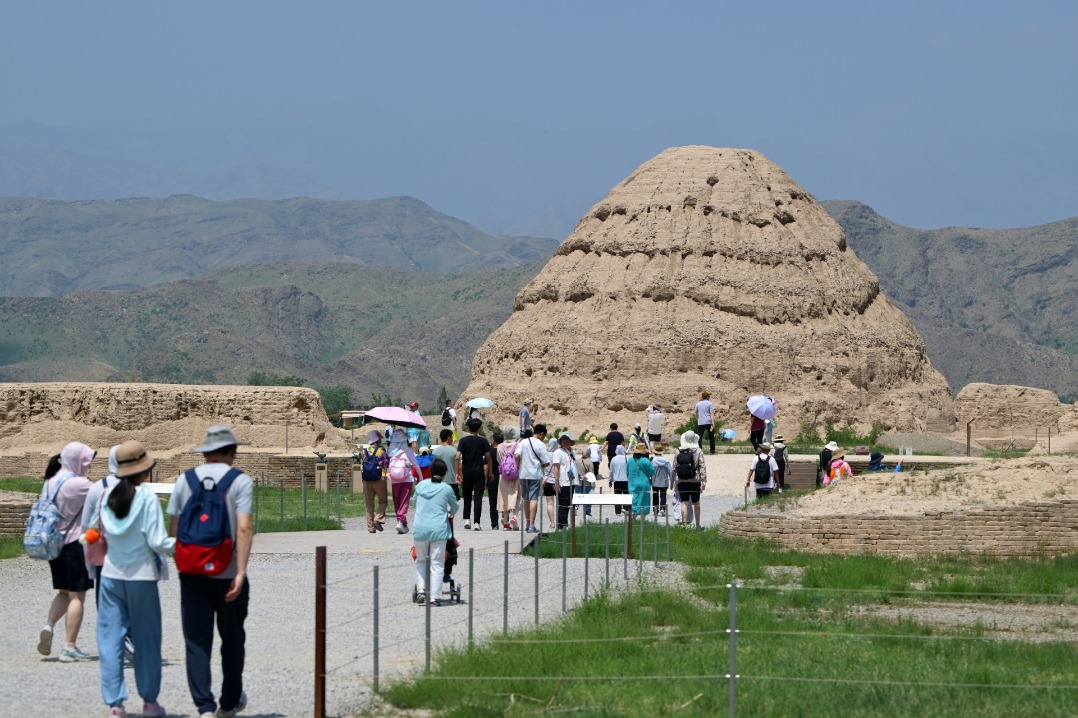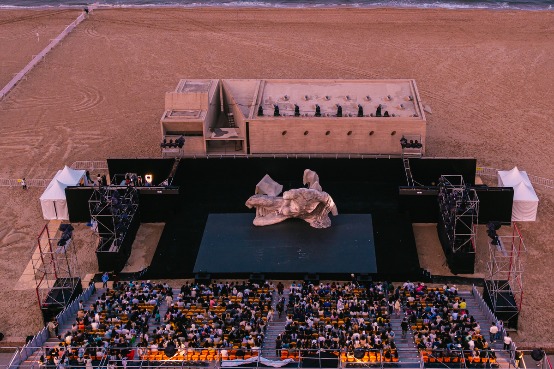Guild halls regain their welcoming lure
Buildings provide a cultural backdrop as they take on a new dimension, Yang Feiyue reports.


An ancient-looking wooden structure adds a sense of history to Beijing's Sanlihe area, where bridges, lush trees and flowing waters from a small river remind one of water towns in the south of the country, especially in early summer.
The wooden building in Dongcheng district features gray bricks and red windows and is part of the Yanliao (Pigment) Guild Hall that was built by pigment merchants from North China's Shanxi province during the Ming Dynasty (1368-1644).
The hall features a temple in the front, which is typical of guild hall structures during the Ming and Qing (1644-1911) dynasties.
Local authorities have integrated pigment, ethnic musical instruments and hutong elements in the hall to carry forward traditional culture and spice up public life.
In the late afternoon, melodic sounds will often drift around the neighborhood as various Chinese opera, standup comedy and acrobatic performances are staged in the historical building.
Enthusiastic applause and cheers from the audience break out from time to time.
Since October 2021, the guild hall has launched hundreds of art performances, says Ma Like, who is in charge of its operations.
Performances with favorable ticket prices have been staged on a weekly basis since March 10, and the seat occupancy rate has been maintained above 95 percent, Ma says.
Commercial standup comedies have also been arranged until August, he adds.
"Currently, the entire Yanliao Guild Hall has been divided into three fully utilized spaces: the theater, the dining area and the bookstore," Ma says.
This arrangement has continuously strengthened the cultural cohesion and awareness of the guild, he says.
Afternoon tea, music and a literature salon have also been prepared to spice up the experience.
"We want people to experience Beijing culture with a different taste," Ma says.
The facility is one of many guild halls in Beijing that have been repurposed for public participation and interactions.
Guild halls used to be specifically designed for people from the same hometown or industry to gather and stay in major cities.
As the national political and cultural center, Beijing not only serves as a birthplace of guild halls but also has the highest concentration of them.
Guild halls in Beijing started to emerge in the Ming Dynasty and reached their peak during the Qing Dynasty.
There were more than 390 guild halls in the city in November 1949, the Beijing Civil Affairs Bureau reports.

































